Ford F-150 Lightning Review: One truck to rule them all

Pros: No gas; blistering acceleration; relatively agile handling; front trunk and other innovative features
Cons: Limited body style and trim variations; less range than ICE trucks; availability
Is this the future of the pickup truck? The Ford F-150 Lightning is a stunning achievement that proves that an electric pickup isn’t only possible, it’s actually better in most respects. True, bladder-busting road trips, especially while towing, will be more difficult (though certainly not impossible) and those with off-roading on their minds will find better options under the F-150 umbrella (though the Lightning’s standard skid plates and locking rear differential help for soft-roading duty). It will also likely take you awhile to actually take one home. Still, the Lightning’s robust performance (how does 775 pound-feet of torque sound?), conventional full-size pickup body and general normalness will make truck vets feel sufficiently at home, while innovations like the Pro Power Onboard system, 14-cubic-foot front trunk and independent rear suspension are game changers. Basically, the Lightning is both a bold leap forward and comfortably familiar.
Although its number of versions isn’t as extensive as the standard F-150, the Lightning lineup still includes a Pro work truck, XLT entry-level consumer model, Lariat near-luxury trim level and the range-topping, luxurious Platinum (pictured above). You’re also restricted to a SuperCrew cab, 5.5-foot bed and all-wheel drive. Yes, “all” rather than “four.” There’s no transfer case or 4x4 system here: the front wheels are powered by one motor; the rear wheels are powered by another. Although torque is a constant 775 pound-feet, the amount of horsepower differs by battery. The first three trim levels come standard with a battery good for an EPA-estimated 230 miles that helps yield 426 hp, while the available Extended-Range battery ups that total to either 300 or 330 miles, and yields 563 hp.
This electric powertrain, plus the independent rear suspension and a whole lot of battery weight results in a substantially different, and better, driving experience. The Lightning feels more agile and less cumbersome, while its ride is more settled and comfortable. Obviously, its acceleration is like nothing you’ve experienced in a truck before, and the one-pedal driving feature makes navigating traffic far more pleasant (as does the BlueCruise hands-free driving system). Whether you’ve driven trucks for years or you’d be a new adopter, the Lightning makes for a friendly transition. And considering just how much attention it got during our test, it seems like there’s a ton of interest from both groups. We think they’d be well-served to check out the Lightning, because we’re certainly smitten.
Interior & Technology | Passenger & Cargo Space | Performance & Fuel Economy
What it’s like to drive | Pricing & Trim Levels | Crash Ratings & Safety Features
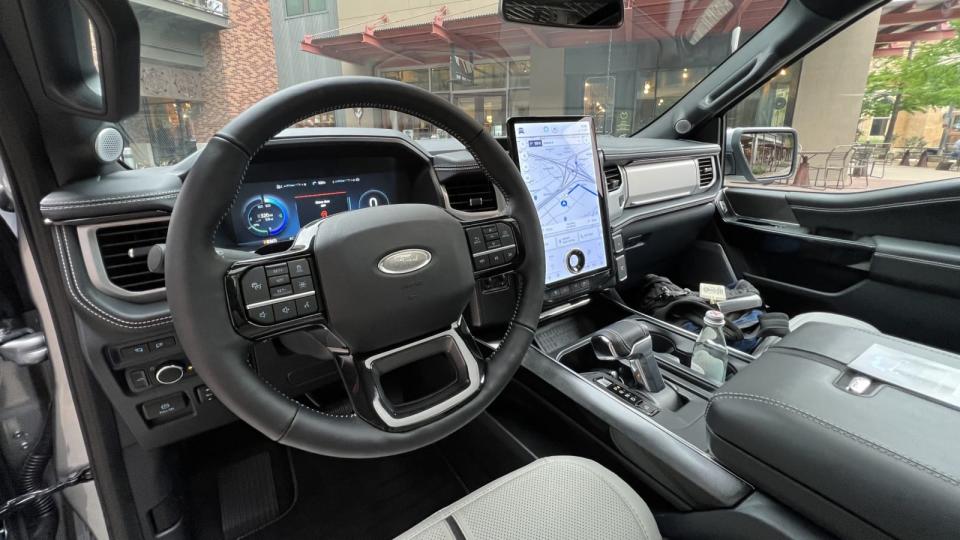
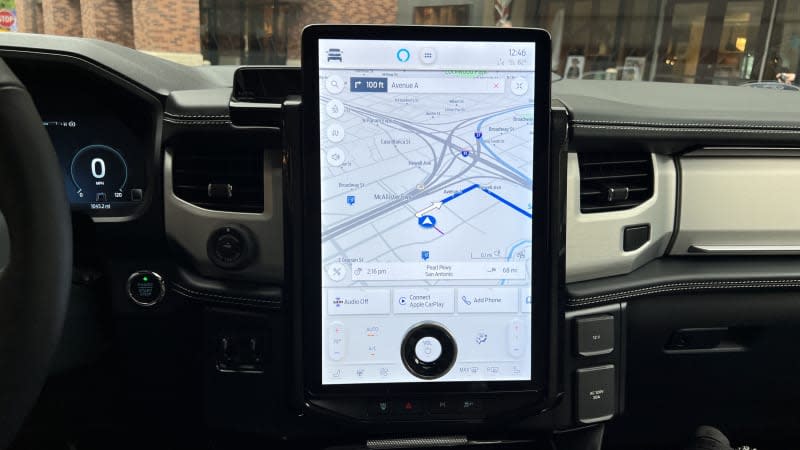
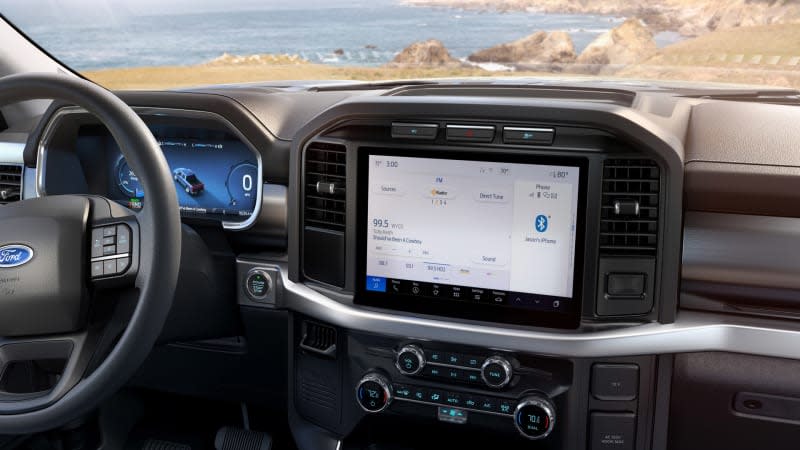
What are the F-150 Lightning interior and in-car technology like?
The Lightning offers two dash designs. The Pro and XLT come with one you’d find in a regular F-150, complete with a standard 12-inch touchscreen that’s an option on most of its gas-powered siblings. The Lariat and Platinum, meanwhile, get the same 15.5-inch portrait-oriented touchscreen found in the Mustang Mach-E, which necessitated a different dash design. Besides the bigger screen, this upgrade features a different interface (dubbed Sync 4A) that may have a steeper learning curve than the standard Sync 4 system, but it’s generally easy to use and utilizes its extra screen real estate well. By contrast, the standard 12-inch screen has basically the same interface as Ford’s 8-inch unit, but everything’s just blown up.
We can’t say that either design is as visually appealing as what you’d find in a Ram 1500 or the impressively redesigned upper trim levels of the Chevy Silverado and GMC Sierra, nor are the materials quite as premium. The Platinum in particular doesn’t look or feel as luxurious as what you’d find in its competitors’ range-topping versions. We don’t think that’s a deal-breaker: The F-150 Lightning cabin is still a pleasant place to spend time, especially without all that engine noise or live-rear-axle jiggling.
Besides the screen, the interior is pure F-150 SuperCrew. You’d be hard-pressed to know you’re in something other than a regular old XLT, Lariat or Platinum. The F-150’s five-passenger seating layout is standard, which means the Lightning also offers the unique center console with an armrest lid that unfolds forward to become a flat surface to place a laptop, paperwork or road-side picnic. To make this origami possible, the shifter uniquely motors forward into a recess, though only when parked. We’ll be curious to see how much owners utilize and appreciate this functionality. The rest of the center console features useful storage, while the back seat features a unique, flip-up floor bin.
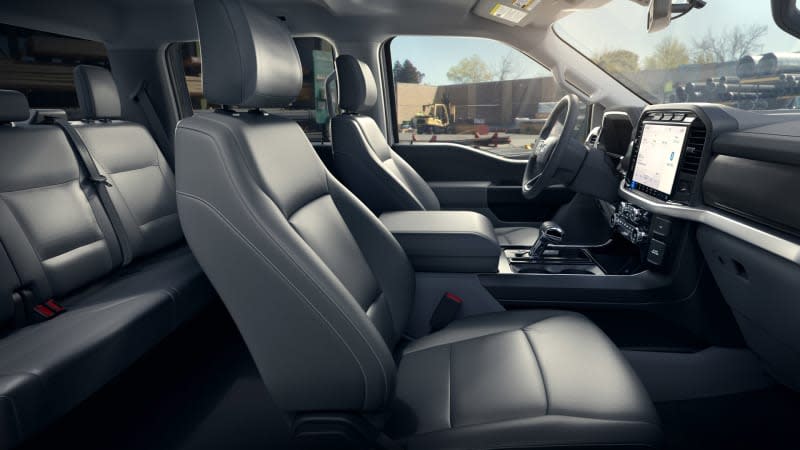
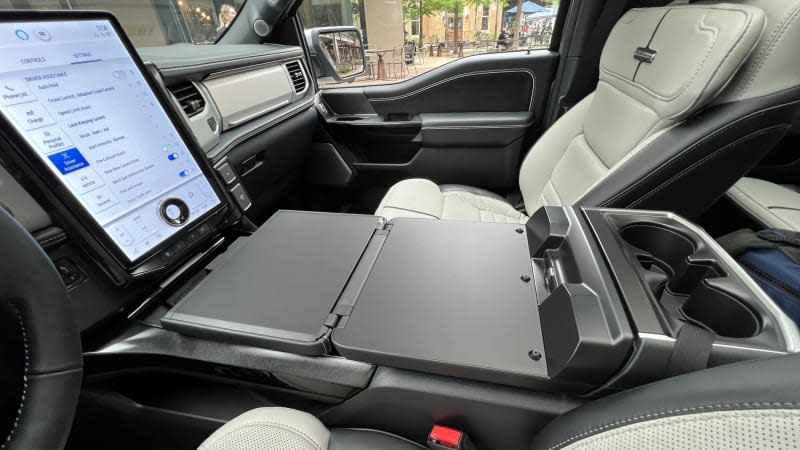
How big is the Lightning?
The Lightning is only available with the combination of SuperCrew cab, the five-passenger seating configuration and 5.5-foot bed. That’s a popular combo, and like all full-size crew cabs, it benefits from a vast amount of passenger space, but it obviously limits your choices.
You do gain something immensely valuable with the Lightning, however; something you probably never thought you’d want before: a frunk. You see, removing the engine from an F-150 results in a 14.1 cubic-foot trunk under the hood (or front trunk, hence “frunk”). You no longer have to risk getting things wet or stolen by putting them in the bed, or need to rely on a bed tonneau cover for those same reasons. You also won’t have to rely as much on the flip-up back seat and the flat floor underneath. Being able to put a stroller, camp chairs, groceries and luggage for the airport in the frunk was quite simply a game-changer during our test. It’s also pretty fun to see people’s reaction when you remote-open a truck’s hood to reveal some Target bags instead of a V8.
This is still a truck, though, and this seems like a good place to mention the unique bed elements the Lightning shares with other F-150s. One is familiar: the tailgate’s pop-out assist step that makes repeatedly climbing up and down out of the bed a game-changing quick-and-easy process. The second is newer: the Pro Power Onboard electrical system that allows the F-150 to function as mobile generator and power station. A 2.4-kilowatt system is standard on the Lightning, and features multiple 120-volt outlets throughout the truck: two each in the cab and bed, plus four in the frunk. This is the same system that comes standard on the F-150 Hybrid. The 9.6-kW system (optional on Pro and XLT, standard on Lariat and Platinum) adds a second pair of 120V outlets and a 240-volt outlet to the bed. Besides adding some serious power to whatever task you might need when away from home, Pro Power actually gives you the ability to power your home in the event of a power loss. We’ve already seen the Hybrid’s available 7.2-kW system come up big for owners, and the Lightning has even greater capability.
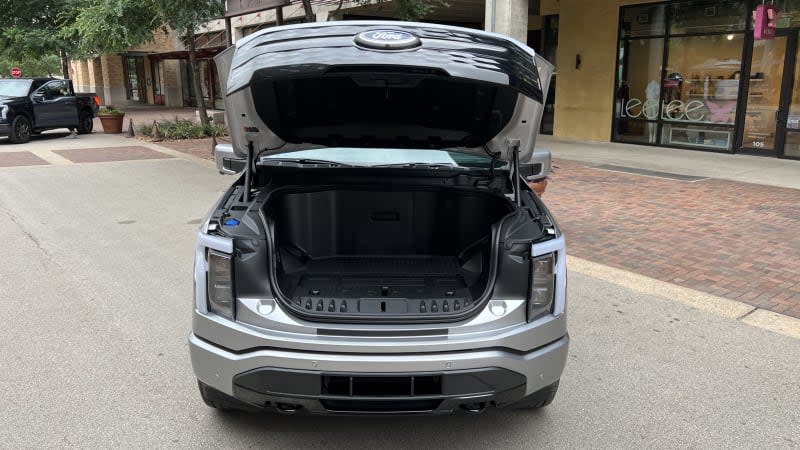
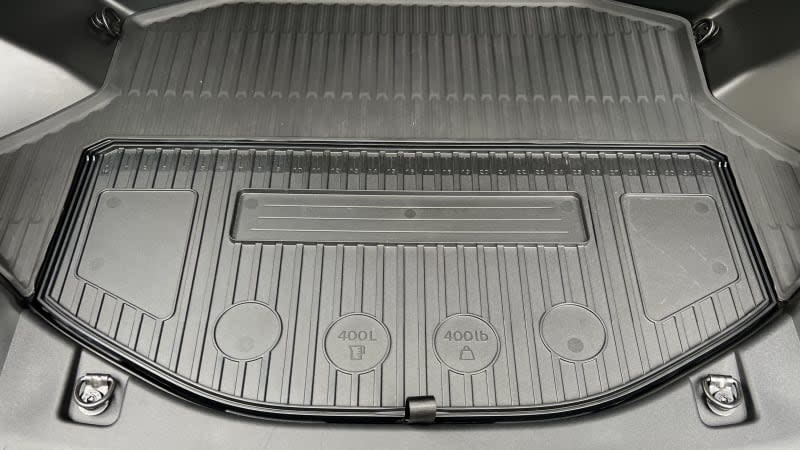
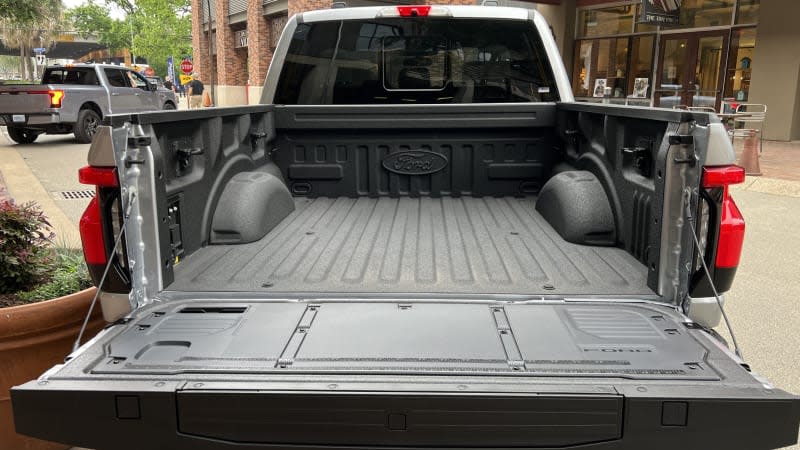

 Yahoo Autos
Yahoo Autos 